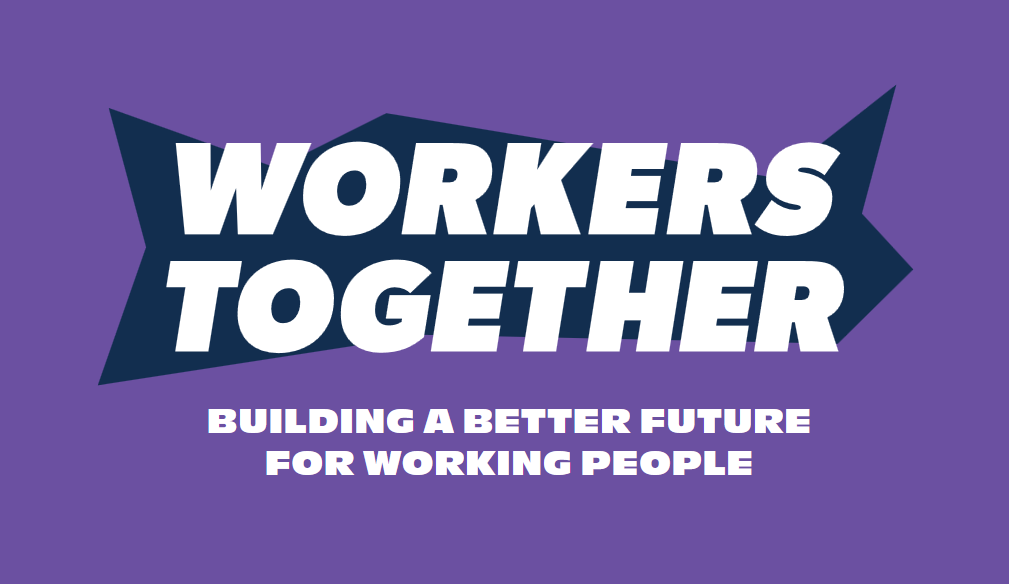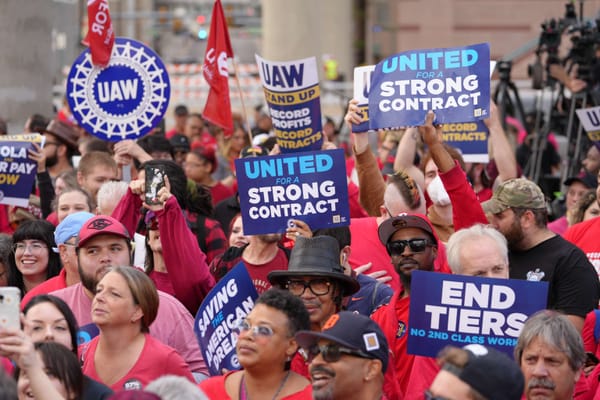A couple of weeks ago, Statistics Canada released an updated version of its report on unionization in Canada. In short, the picture is not good — a finding that should surprise no one.
Overall, union density in Canada sits at 29 per cent. The share of private sector workers who are members of unions continues its downward trend, hovering just above 15 per cent. Although the pace of union decline has been slower over the past 15 years than it was from the early 1980s to the mid 1990s, the inability of organized labour to impede, let alone reverse, the fall in union coverage is appreciable.
StatCan annually releases this accumulated Labour Force Survey data to keep track of unionization and collective bargaining agreement coverage in Canada. One previous installment in the series, which came out in 2012, was a go-to resource for those concerned with the long-term decline of union density. This latest StatCan update, which tracks union coverage rates from 1981 to May of this year, demonstrates that previous worrying trends have continued unabated.
As the report notes, union density — the share of workers who belong to a union — is an important measure not only because unions directly set wages for organized workers but also because unions indirectly influence wages and standards across the entire economy. Whether through exerting upward pressure in specific sectors or in the labour market more broadly, or through public policy advocacy and influence, unions raise wages and improve working conditions for the whole working class. As a rule, higher unionization is positively correlated with better wages and working conditions across the economy, along with lower levels of overall inequality.
What did StatCan’s analysis find? From 1981 to 2022, union density fell from 38 per cent to 29 per cent. Two-thirds of this decline (-6.1 per cent) occurred between 1981 and 1997. Since 1997, the fall has been slower but nevertheless persistent.
As StatCan noted last year, the pandemic momentarily increased union density slightly, but only because nonunion workers were more likely than union members to lose their jobs during lockdowns. As the economy reopened and the labour market returned to semi-normality, unionization more or less returned to its previous downward trend line.
The fall in union density has occurred entirely in the private, or “commercial,” sector. Public sector unionization has held steady at around 77 per cent. In other words, public sector union density is essentially at “saturation,” that is, nearly everyone who is not in management belongs to a union. For the labour movement to grow, it has to bring in new members from private sector industries and workplaces — a solution that sounds much easier than it actually is.
Since 1981, the fall in union density has occurred entirely among men (-16 per cent), while women’s union coverage has remained stable. These observed gender differences are the consequence of occupational segregation and the changing economic trends behind de-unionization. Women’s concentration in public sector jobs in healthcare, education and social services contributed to their stable 31 per cent unionization. The growth of female union members largely happened up to the mid 1990s, as their share of full-time workers increased.
Men, on the other hand, have seen significant economic shifts, particularly in the private sector where their union density went from a high of 31 per cent in 1981 down to 19 per cent this year. While the loss of jobs in manufacturing and resource extraction explains a large portion of men’s shrinking union coverage, there has also been a fall in union rates within goods-producing sectors. From the early 1980s to the late 1990s, unionization dropped between 13 and 19 percentage points among men in forestry, mining, manufacturing and construction.
In other words, men’s private sector union decline is not simply a story of job loss, but also one of de-unionization in the jobs that remained. The two trends are intimately related. As deindustrialization and the globalization of capital resulted in job outsourcing and off-shoring, workers’ bargaining power was eroded. Workers in the private sector — particularly in manufacturing and other goods-production — were less able to organize and exercise power. Economic and job insecurity undermined the ability to maintain or extend union coverage.
As union density has declined so too has the prevalence of other workplace benefits, most notably pension coverage. Access to registered retirement plans, of both the defined benefit and defined contribution varieties, has shrunk along with unionization. Union membership is frequently a gateway to other workplace benefits and protections, including job security.
What is needed to reverse the trends observed by StatCan? Bursts of new organizing energy in retail and warehousing — at Starbucks, Amazon and other high-profile employers — while inspiring, have so far not made any appreciable difference to the levels of union density, unfortunately. There could be several reasons for this.
To start, employers are increasingly aggressive in their fights against union organizing. While bosses have always resisted unions because of the threat the latter poses to their unilateral power on the job, they now seem to be willing to devote greater resources to remaining “union-free.” Additionally, as many union staffers will tell you, certification is only the first step in the battle. Winning a decent contract and maintaining a bargaining unit over time is extremely difficult work. Perhaps a better measure of success is the portion of newly certified workers who remain union members five years later. If we had those numbers, we might be even more panicked, I’m afraid.
Some observers point to the burdens imposed by the union certification process itself, most notably the general move away from card-check, or “single step,” union certification toward mandatory secret ballot elections. Indeed, there’s evidence going back some time that management union-busting is more effective when unions must both gather signed cards and then win an election. Even with relatively strict regulatory time limits outlining the process, the additional step of having to demonstrate union support through a labour board-supervised vote gives the employer extra time to attempt to squash the organizing drive.
Card-check remains in only a couple of provinces, but has returned to both the federal jurisdiction and British Columbia. The jury is out on whether the return to card-check will help increase density in these jurisdictions. An additional issue, of course, is that the certification process can be altered any time there’s a change of government. In fact, several provinces have whipsawed between elections and card-check as Conservative or Liberal and NDP governments have come and gone.
I would argue that perhaps the biggest impediment to raising union density is the mismatch between the shape of our contemporary economy and the scope of collective bargaining. In the private sector, unions mostly have to certify bargaining units and negotiate at the level of the worksite, which makes unionization extremely difficult in small workplaces, franchises and other “fissured” workplaces characterized by complex ownership and organizational structures.
A model of sectoral bargaining, where unions bargain contracts covering whole sectors or industries, is a possible alternative. Labour lawyers and scholars here in Ontario have been working on a draft proposal of such a model, based on New Zealand’s recently implemented framework for “fair pay agreements.” Of course, winning this type of reform would require Canadian unions to work together in ways to which they are unaccustomed.
In many European countries, by contrast, unions have long bargained sectoral contracts. As a result, union density remains far higher in most European countries than it is in Canada. In fact, troubled by a decline in union coverage, the Council of the European Union recently adopted a directive to encourage greater access to collective bargaining among member states. Any EU member with union density below 80 per cent is directed to establish an action plan to “promote collective bargaining.”
If Canada’s long-term decline in union density is to be reversed, a combination of new organizing and legislative reform will be needed. Major union investments in staff organizers and institutional capacity are vital to grow the ranks of private sector union members. But unions will continue to fight an uphill battle without legislative changes that make certification easier and help ensure newly organized workers can remain union members into the future.







